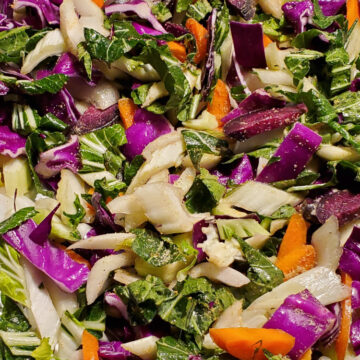
Our overall health is largely determined by our diet and the food we eat, and whether those foods are nutrient-dense or nutritionally depleted. In 2004, a landmark study compared the nutritional content of 43 different fruits and vegetables from 1950 and 1999. Using data from the United State Department of Agriculture, the research found that produce harvested in 1999 contained significantly less protein, calcium, potassium, iron, vitamin B12 and vitamin C, suggesting that “any real declines are generally most easily explained by changes in cultivated varieties.” In other words, nutritional content has deteriorated in exchange for higher volume.
It’s not hard to see why or how this happened. Today, industrial agriculture and big box retailers have managed to develop a supply chain that provides Wyoming with strawberries in January. As unnatural as this may be agriculturally, today’s consumer demands it. This, in conjunction with an exploding population, has forced farmers to change virtually every step of harvesting produce, from soil cultivation to transportation to distribution. And as beneficial as widely available fruits and vegetables may be, it comes with a trade-off; they’re not nearly as good for you as they should be.
Soil for higher yields is stripped of minerals and nutrients
Industrial agriculture is monocultural, meaning that the same soil produces massive quantities of a single crop year after year. It requires year-round harvesting, and the use of numerous harsh herbicides and pesticides. This forces the soil to work much harder under tougher conditions, ultimately stripping it of minerals and nutrients it would otherwise pass into plants. The point of monocultural farming isn’t to make nutritious, tasty food; it’s to harvest larger, pest-resistant crops with higher growth rates.
Transportation requires produce to be picked before its ripened
When a Wyoming grocery store buys tomatoes from either Florida or California, the nation’s leading producers of tomatoes, it can obviously take a long time to get there. And depending on by whom and how they’re transported, those tomatoes are exposed to varying levels of air, artificial lights and temperature fluctuations. Fruits and vegetables are most nutritious and taste best when they’re picked at the peak of freshness, and they start losing nutrients around 24 hours after being picked. It can take a week for these tomatoes just to arrive in Wyoming, then several days more before they’re purchased from the store. So those tomatoes have to be picked when they’re green and hard – well before they’re ready and well before they’re able to mature into their most nutritious state.
Grocery stores’ practices are designed to preserve produce as long as possible
Retailers have varying standards for maintaining and selling produce. Big box retailers are working with thousands of items of inventory and dozens of employees. The longer they’re able to keep fruits and vegetables from rotting, the longer they’re able to sell them. Preserving a plant in a form that would be attractive to customers is a much higher priority than maintaining nutritional integrity. It’s common practice for grocers to use wax that will make apples gleam and make cucumbers last days longer than their natural shelf life.
The care and storage of produce is a complicated process, so education is an important component, especially when you’re managing dozens of different fruits and vegetables in one store. Zucchini, for example, has a high respiration rate, so if it’s not given adequate ventilation in the right temperature, it will respirate and mold faster. But large numbers of employees and high turnover rates make it impossible for large retailers to adequately educate their staff on all the intricacies of giving that zucchini all the love and care it deserves.
There are more nutritious options available
Plants are a lot like people. To be at their best, they need adequate nutrition, rest and attention. Industrial agriculture provides massive amounts of food to massive amounts of people, which is critical for society. As essential as this is, it does come at the expense of nutritional value. Fortunately, there are alternatives.
Healthy soil results in healthy fruits and vegetables
At Lloyd Craft Farms in Worland, nutrition is the priority. It’s Terri and Lloyd Craft’s mission to provide the kind of food they want to serve their family. “People are amazed at how much better fresh produce tastes. It’s a combination of mineral-rich soil, the weather and how quickly we’re able to get it to people. We’ve been doing this for 11 years, so we’ve spent that time building the soil back up,” Terri said.
They spent their few first years in business harvesting their land. Robust, diverse crops, an off-season to replenish, and constant care have resulted in soil crawling with worms, which is the kind of soil healthy enough to naturally fight pests and disease without chemicals. It’s the kind of soil that isn’t possible to cultivate on a large scale.
The less distance produce travels, the better
Wyoming weather may not seem conducive to growing flavorful, nutrient-dense produce, but according to Terri, the dry conditions are actually ideal. Although the growing season is shorter here, the desert climate of the Big Horn Basin mean she doesn’t have to worry about mold or fungus. Mild summer temperatures afford her cool mornings to harvest her crops and immediately refrigerate them. They’re boxed that afternoon, returned to the cooler for overnight storage, then delivered across the state in a refrigeration truck, which Terri says is key for maintaining nutrients.
“Plants are living things. When vegetables and fruits are removed from the mother plant, they stop growing and they stop producing nutrients,” Terri said. Local farmers keep fruits and vegetables on the mother plant until they’re ready to be picked, because it doesn’t take a week to get it to the store. Additionally, Wyoming producers know the best ways to distribute across Wyoming, so they better control variants like air, light and temperature. So those tomatoes that were imported from California and Florida picked when they’re green and hard could come from a Wyoming grower, and picked when they were deliciously red and soft, and at their most nutritious.
Local farmers partner with smaller retailers
While delivery is technically the end of Terri’s portion of the supply chain, she won’t drop her produce off just anywhere. “Having people on the other end who are as passionate and knowledgeable as you are is so important. They need to baby the plants like you do,” she said. She works with retailers who are educated on nuances like the high respiration rates of zucchini, because she believes that her plants, and the people who eat them, deserve better.
How can I eat more nutritionally?
So if accessing the freshest, most nutritious produce is a priority in your family, there are a few things you can do:
- Eat produce in season
- Buy food that was grown close to you
- Purchase from smaller farmers
In other words, eat locally. #EatWyoming





